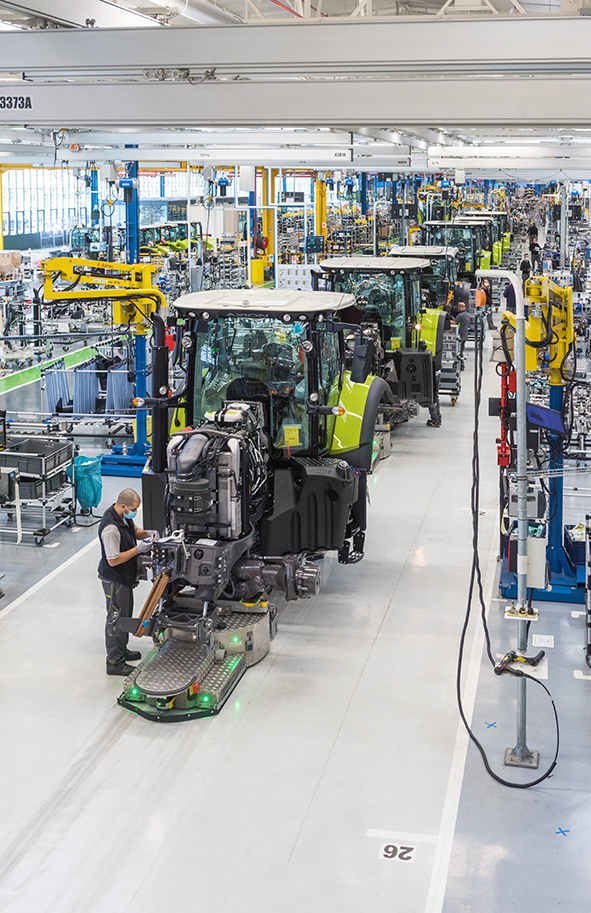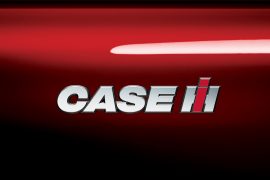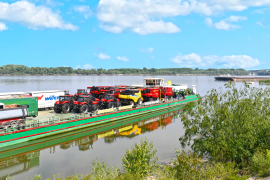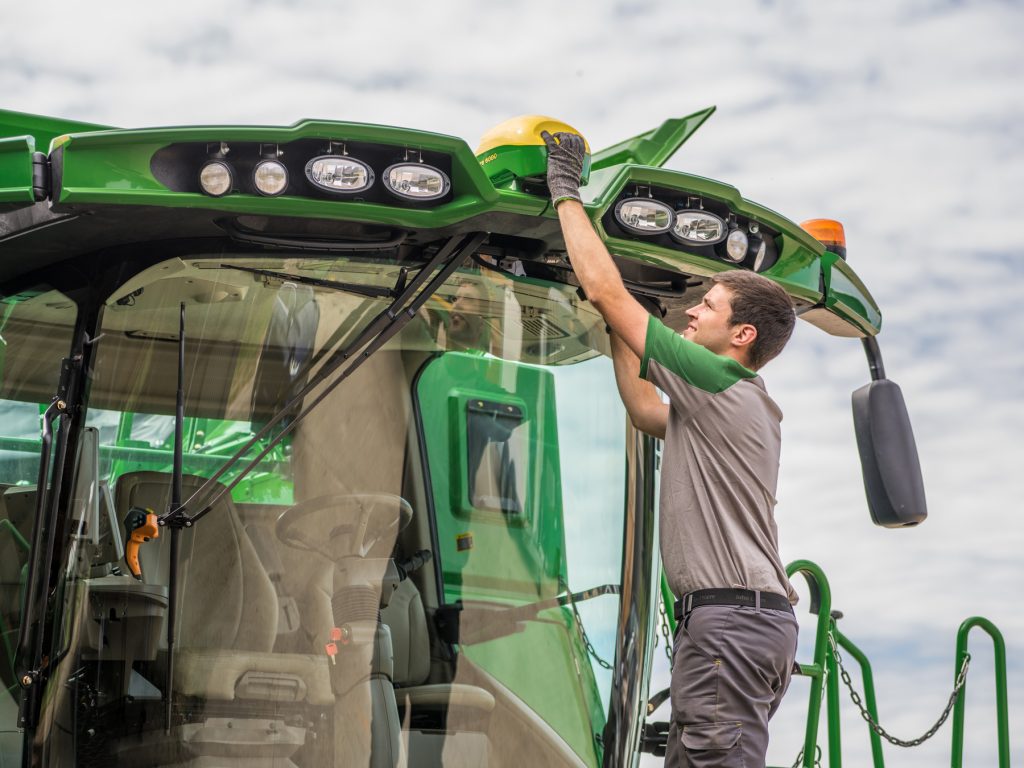CEMA, European agricultural machinery industry association, supported the original Machinery Directive 2006/42/EC as the precursor of the New Legislative Framework 2008 approach and has been working on a position paper outlining proposed amendments to European Commission MPR text. Retrospectively, directive 2006/42/EC improved the placing of agricultural equipment on the internal market. It eased the conformity assessments processes and lowered the administrative costs associated.
The CEMA amendments and justifications for proposed changes to the European Commission are outlined below.
Artificial Intelligence (AI)
The Agricultural Machinery is very innovative to support farmers in staying competitive and to deliver on the sustainability goals. That includes the free use of new technologies within the boundaries due to the risk assessment that manufacturers have to perform. Lean procedures are important, as well as clarity on the applicable requirements.
On AI the link between the Machinery Product Regulation and the AI Regulation cannot be ignored. In our view, the purpose of the future AI regulation is to protect individuals from the malfunctioning of artificial intelligence or its misuse for purposes that endanger safety or security. The future AI regulation particularly targets machine learning systems, which are taking over decisions in evolving environments and this to a level that it may affect and influence the whole society.
With the Regulation for AI the European Commission has made a clear split between those situations that are mainly to be tackled under that AI Regulation and situations/risks that should be tackled within the more specific targeted legislation e.g. the Machinery Product Regulation. In order to cover all cases for the former the AI definition is taken as wide as possible.
However CEMA raised the question whether such broad scope is appropriate under the Machinery Product Regulation and CEMA proposes a narrowing of the scope to what is the main issue of an advanced AI being its ability to evolve autonomously during the life cycle of a product. It means the system will evolve as it sees fit. With the current AI definition also deterministic systems guiding safety functions could become in scope but also AI systems that are completely trained off-line and where its behaviour falls completely under the control of the manufacturer.
For AI being treated under other legislation and still be seen as high risk AI under the AI Regulation, latter Regulation posses two conditions: it must be a safety component and it must be under third party assessment. What happened next in the Machinery product Regulation proposal, is that the European Commission decided that due to the very few cases of AI being used in safety functions, and therefore the assumed lack of experience and expertise on the matter, any AI, following the definition of the AI Regulation, used in a safety function, embedded or not in a machinery, would be seen as a high-risk machinery product, and therefore following third party assessment. As a consequence it would also be seen as high-risk AI. This is a proposal that completely ignores the basis for the Machinery Product Regulation which is to act accordingly following a proper risk assessment. Due to
the open definition of AI and due to the link with the term ‘safety function’, which is nowhere defined, there is a situation that creates much confusion and misses clarity. Again adding a definition of AI is key to bring the scope of the Commission proposal to the right dimension. But in addition there is a need for a definition on the term ‘safety function’.
The success of the Machinery Directive was that it gave manufacturers the choice between different conformity assessment procedures and the possibility to carry out the risk assessment, while learning in the process. Giving the right to perform the risk assessment to a third party, would not only slow down the build-up of expertise, it could block it.
Since the Machinery Directive and the NLF came into force, no third-party intervention was required on our machinery. Only safe integration is currently under third party check. CEMA calls for these legislative provisions to be maintained because they guarantee the proper functioning of the internal market and minimize the administrative costs of placing products on the market, which would otherwise have to be passed on to European farmers.
Interaction between Machinery Regulation and other EU product legislation
A specific approach has been chosen for the relation between the new proposed regulation on Artificial Intelligence and Machinery Regulation. Situation is clear and specified in the legal text also when it comes to the link between Low Voltage Directive (LVD) 2014/35/EU and Machinery Regulation (see for example Annex III, point 1.5): requirements of both legislations have to be applied (as appropriate), but the conformity assessment procedure has to be made just once, according the Machinery Regulation only.
This approach should be extended to all the relations with other applicable Union legislations, such as Radio Equipment Directive (RED) 2014/53/EU or Pressure Equipment Directive (PED) 2014/68/EU. In both cases issues are likely to arise in future, as there is a partial overlap in the aspects covered, but divergence in the conformity assessment procedures. For example the EU Commission is preparing a delegated act under Directive 2014/53/EU to cover cybersecurity of radio equipment incorporated on machinery. At the same time the Machinery Regulation is introducing new safety requirements on cybersecurity. Will there be consistency in the requirements? We do not know yet. Certainly there will be inconsistency in the conformity assessment procedures.
Article 8, as it is in the adopted proposal, creates inconsistency between a general approach, stated by the article itself, and the specific approach chosen for the AI Regulation or for LVD. It leaves unresolved and unclear the link with RED and PED.
The Machinery Product Regulation will be in place to ensure high safety levels and a free circulation of goods within the Single Market. They are fundamental objectives. To reach them, appropriate conformity assessment modules are defined in it. Deviating from the modules set by the Machinery Product Regulation, mandating diverging conformity assessment modules for similar requirements through other pieces of EU legislation, leaving the door open for diverging interpretations would unavoidably play against those objectives.
Implementation dates and transitional period
The implementation timelines provided in the proposal are very short: – the time given for the application of the Machinery Products Regulation after its entry into force, thirty months, does not suit with the technical or administrative modifications included in the new Regulation. Additionally, it does not take into account the time necessary to update all the harmonised standards.
– when it come to the transitional period, it would be preferrable to refer in Article 50 the “placing on the market”, instead of the “making available on the market”. Indeed, the latter could be intended as referring also to used products. Besides, CEMA does not understand why the reference date considered is the date of entry into force of new Machinery Regulation: it would be clearer and more logic to refer to the date of repeal of the previous Directive 2006/42/EC.





